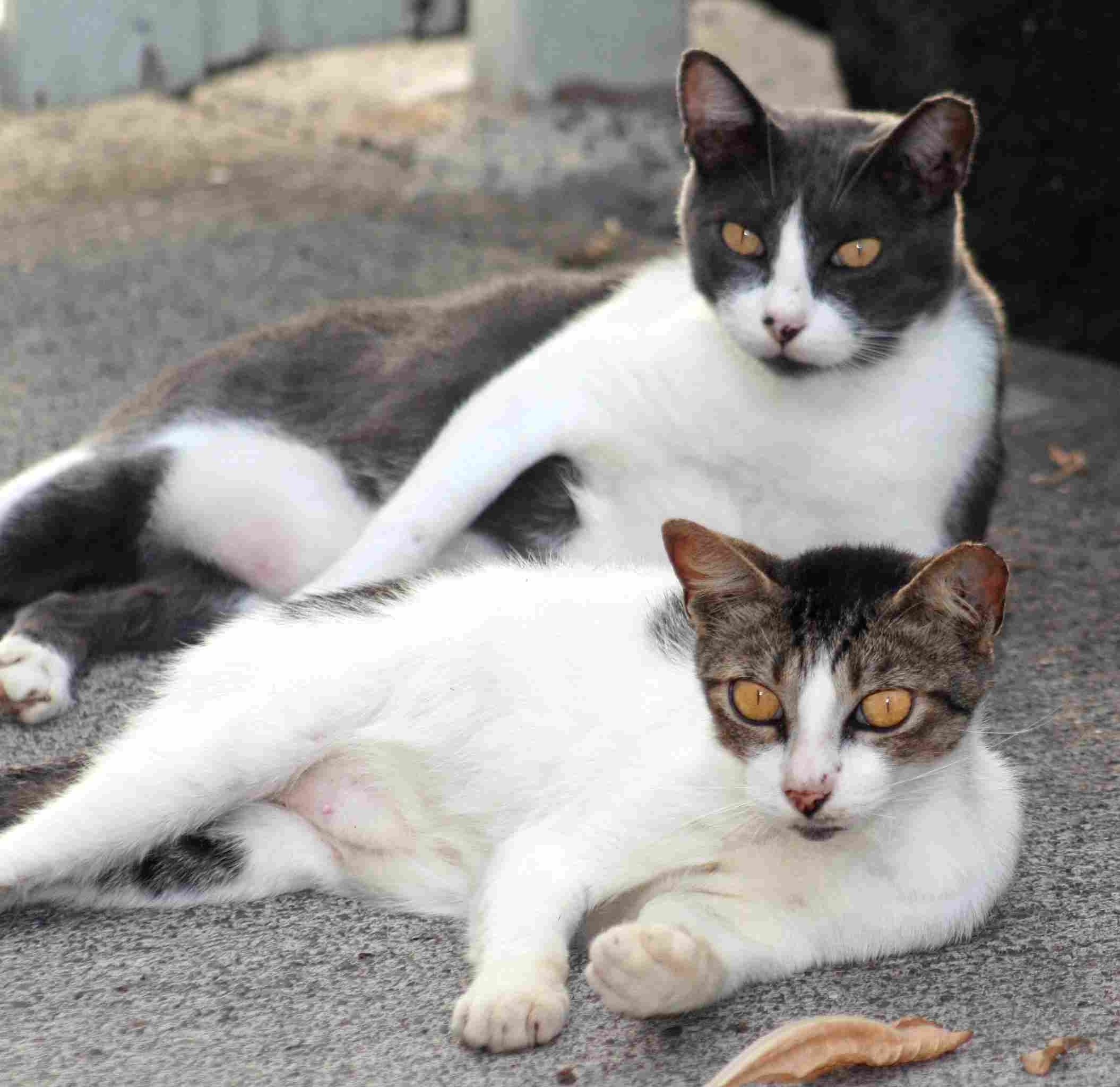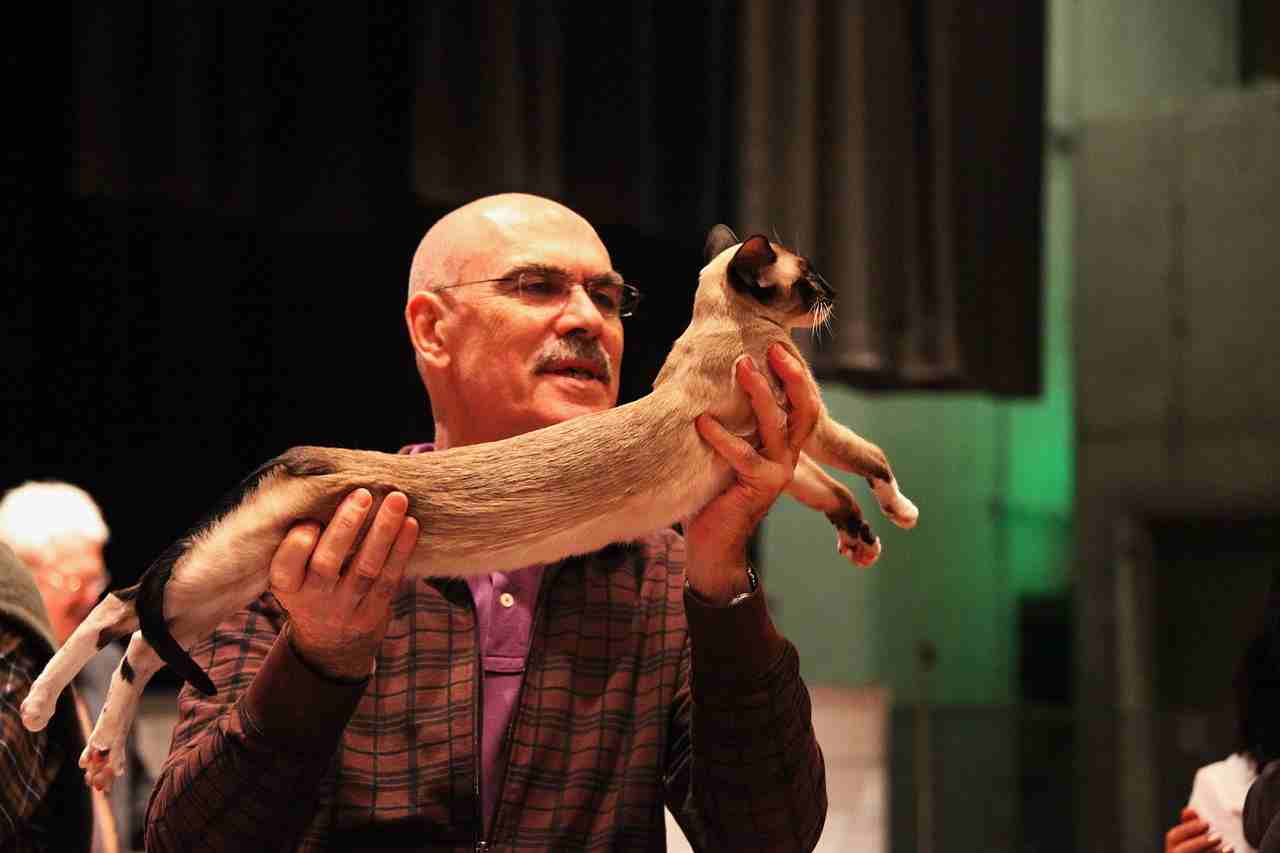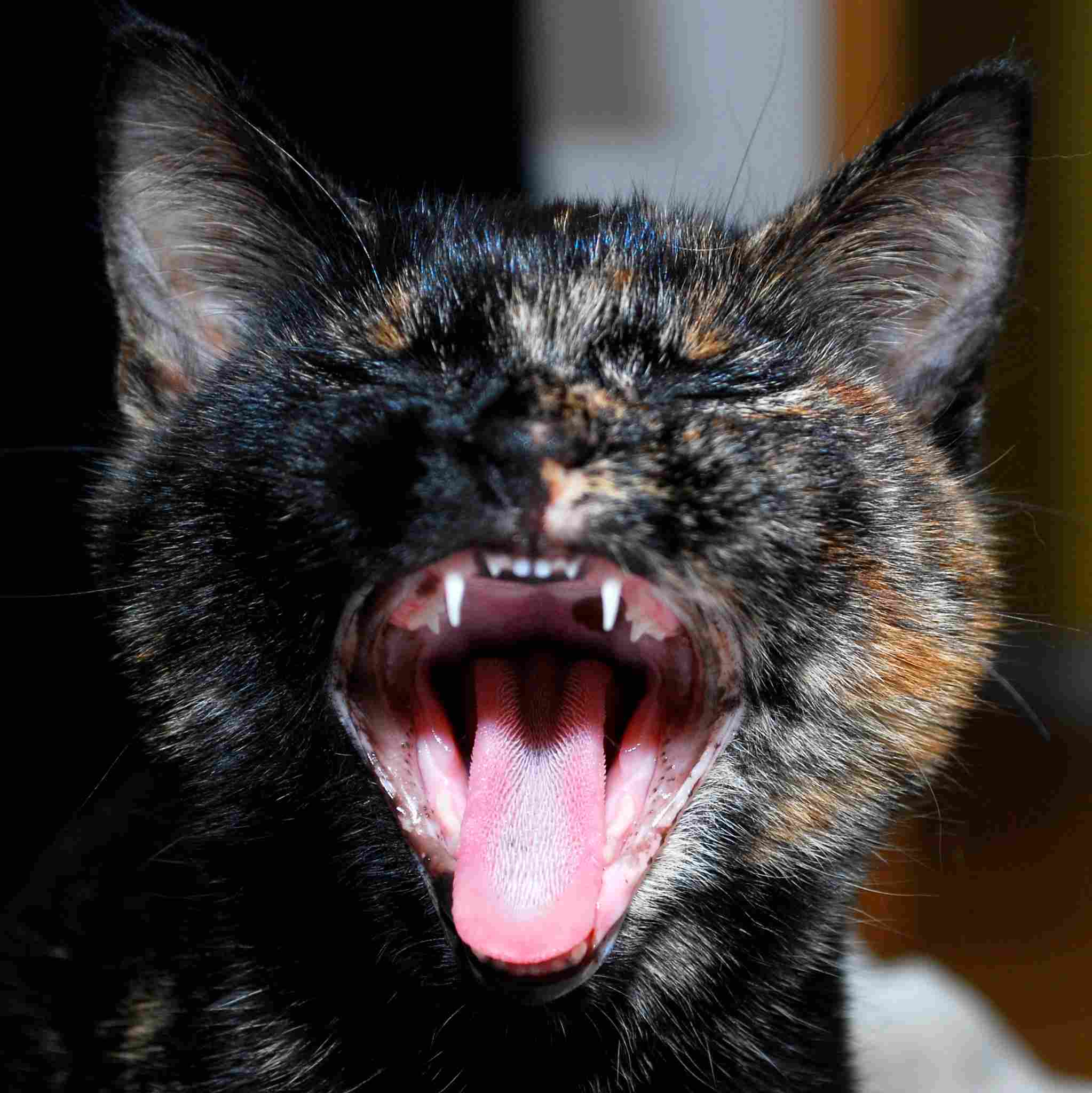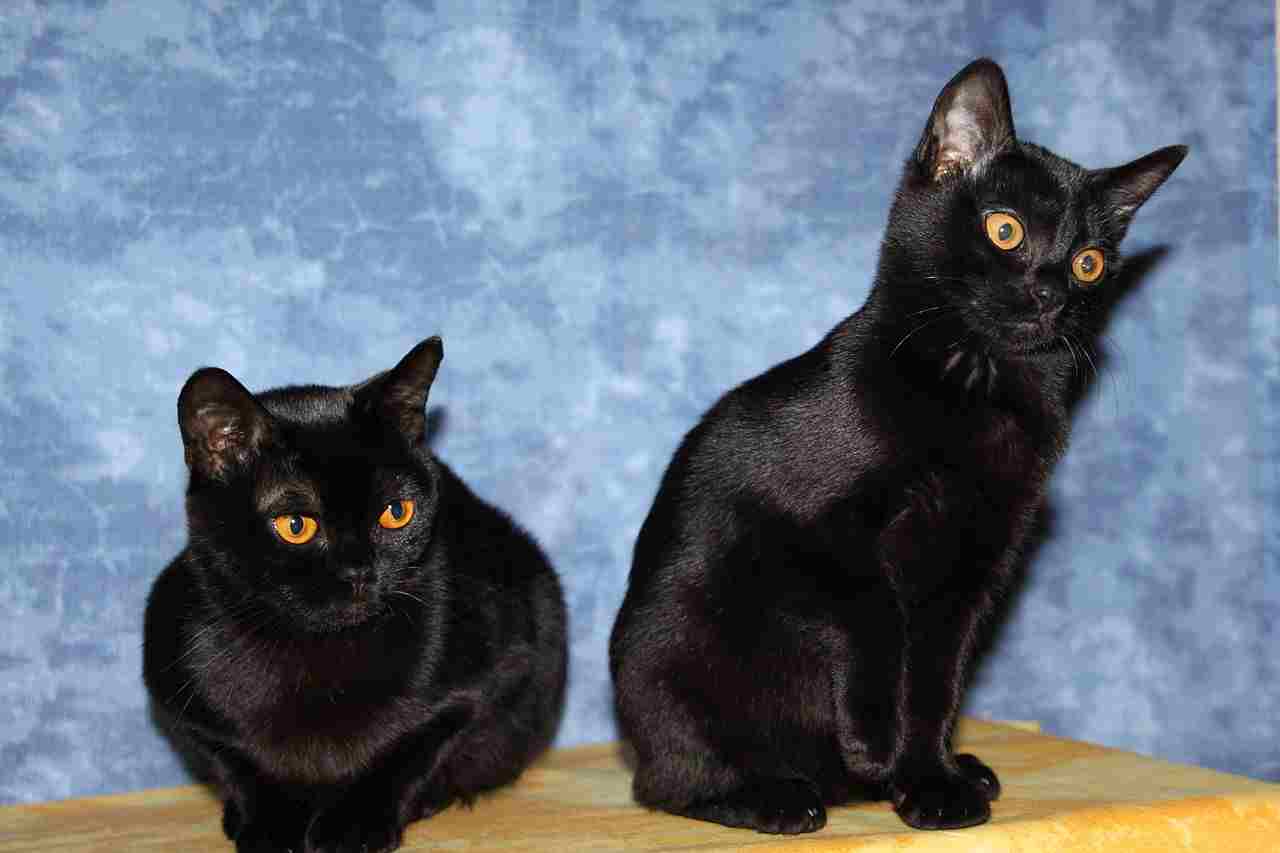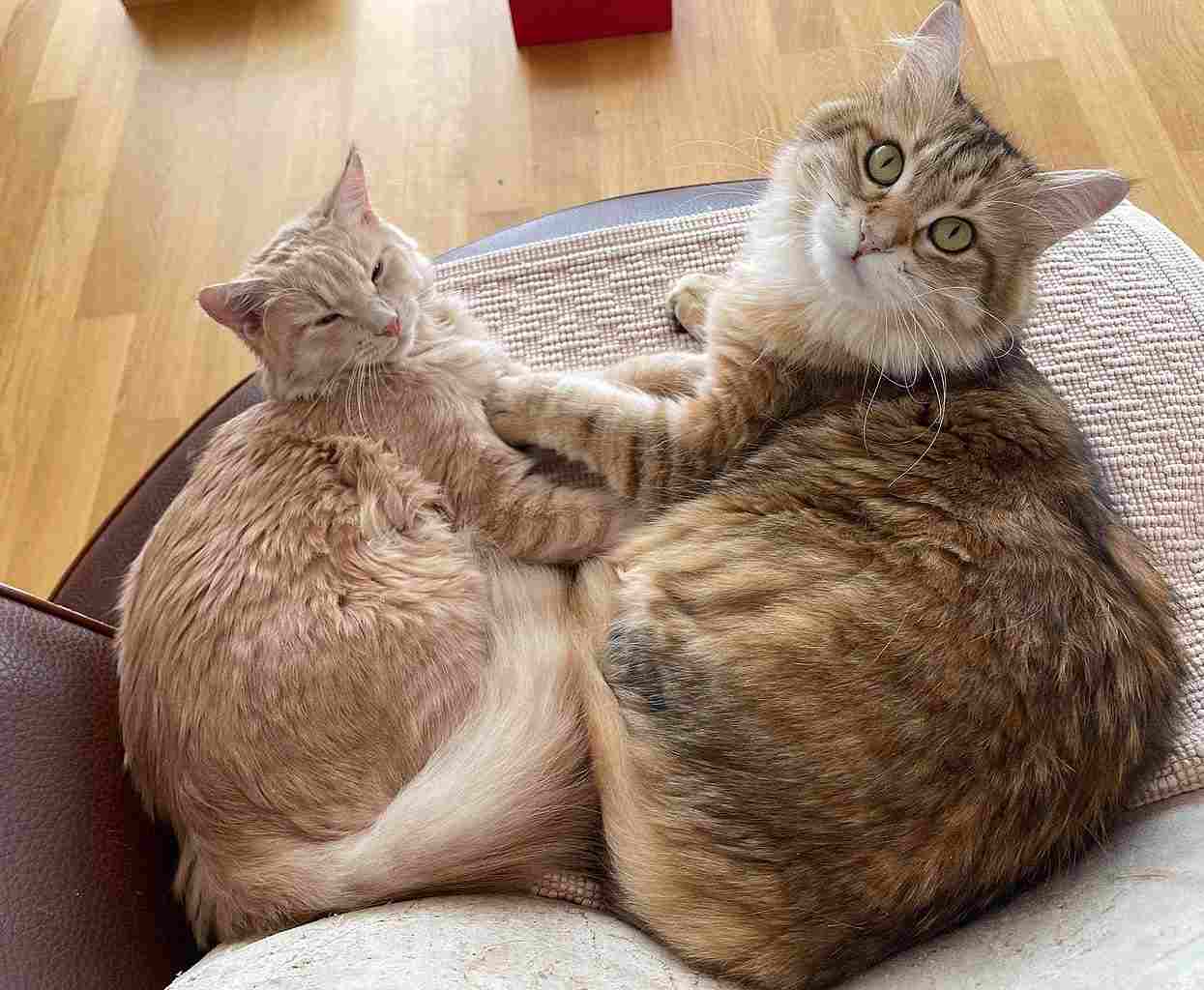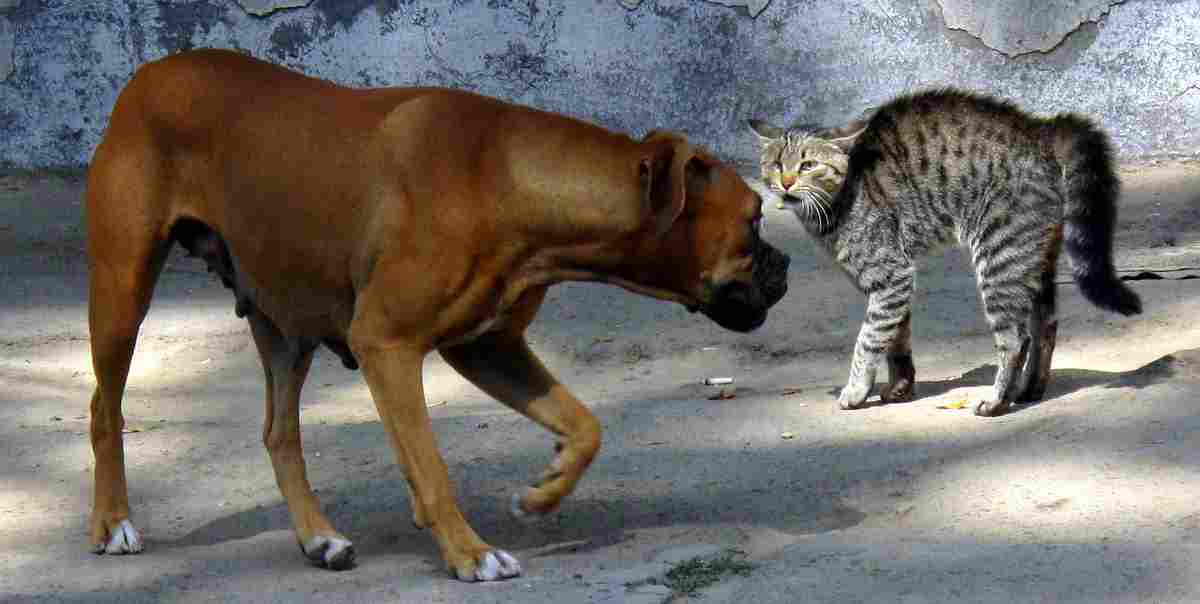Pregnant Cat Vs Fat Cat Belly, Symptoms, Overall Comparison
Differentiating between a pregnant cat and a fat cat involves observing distinct physical and behavioral indicators. When viewed from above, pregnant cats exhibit a more pronounced distension in the lower portion of the stomach, while fat cats typically display a more uniform distribution of excess weight. Additionally, pregnant cats often have a harder stomach, more prominent nipples, and may experience specific physiological and behavioral changes, such as vomiting, appetite alterations, and shifts in behavior.
Pregnant Cat vs Fat Cat: Navigating Feline Physical Dynamics
I. Distinct Stomach Distension:
– When viewed from above, pregnant cats display a distinctive stomach distension, primarily in the lower portion. This differs from fat cats, where excess weight is more uniformly distributed throughout the abdomen.
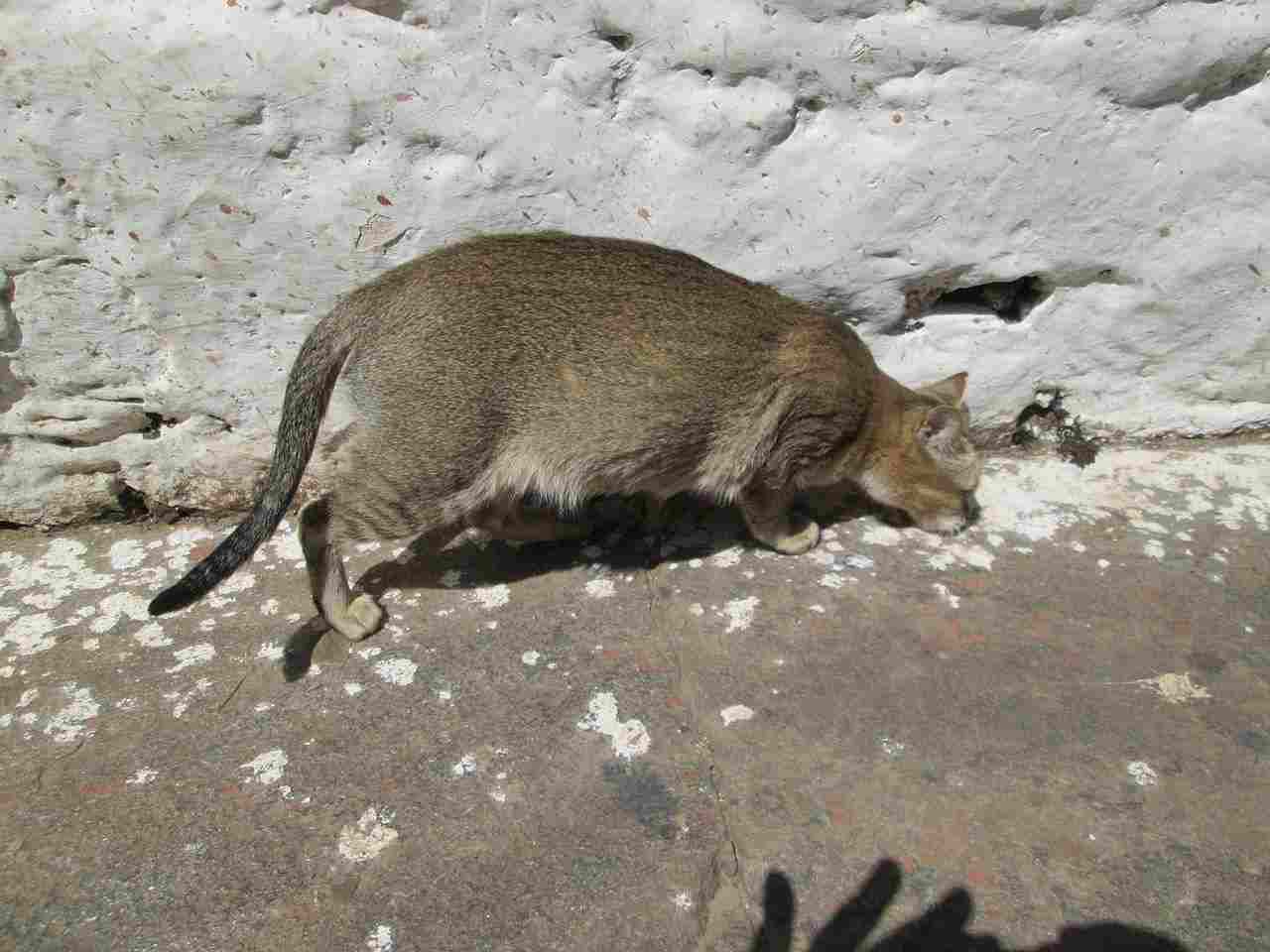
II. Uniform Weight Distribution:
– Fat cats tend to exhibit a more uniform distribution of excess weight across the abdomen when viewed from above, lacking the focused distension seen in pregnant cats.
III. Stomach Consistency and Nipple Prominence:
– Pregnant cats often have harder stomachs compared to fat cats, and their nipples may become more prominent as pregnancy progresses. These physical changes are not typical characteristics of fat cats.
IV. Physiological Changes:
– Pregnant cats may experience physiological changes, including vomiting, alterations in appetite, and potential behavioral shifts. These changes are not commonly associated with fat cats and may serve as additional indicators of pregnancy.
V. Behavioral Changes:
– Behavioral changes, such as increased nesting behavior or heightened maternal instincts, may be observed in pregnant cats. These behavioral shifts are distinct from the lack of specific maternal behaviors in fat cats.
VI. Veterinarian Consultation:
– Distinguishing between a pregnant cat and a fat cat may require veterinary consultation for accurate assessment. Veterinarians can perform physical examinations, ultrasounds, and provide guidance on nutrition and care tailored to the specific needs of pregnant or overweight cats.
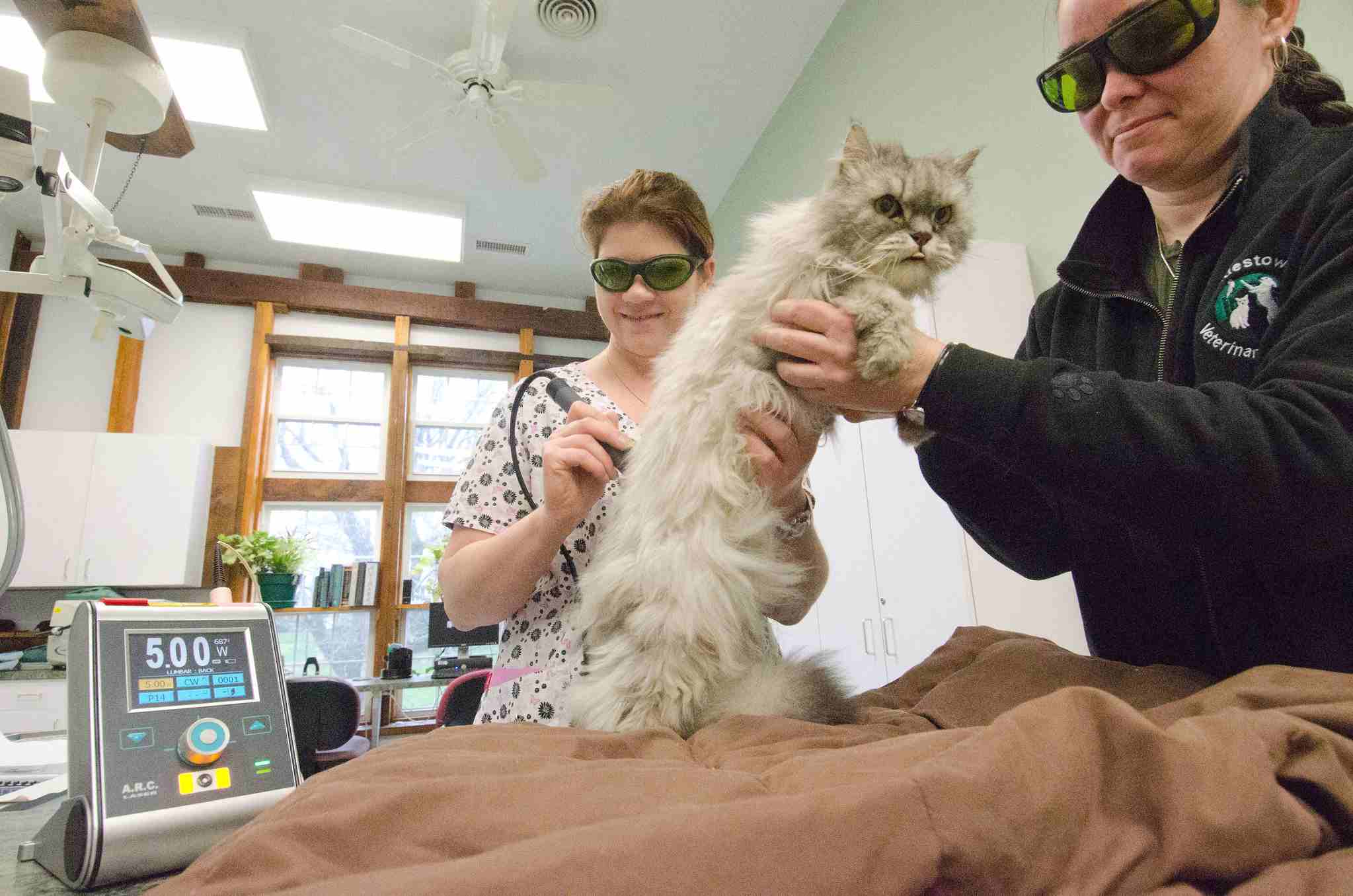
VII. Fostering Optimal Health:
– Understanding the differences between pregnant and fat cats enables owners to provide appropriate care and address the specific needs of their feline companions. Monitoring changes and seeking veterinary guidance contribute to fostering optimal health and well-being for pregnant and overweight cats.
*Details of Comparison
| Criteria | Pregnant Cat | Fat Cat |
| Symptoms At Outset | – Changes in heat cycles – Behavioral shifts – Increased appetite – Occasional vomiting |
– Consistent heat cycles – Stable behavior – Steady appetite – Absence of morning sickness
|
| Belly Distention And Morphology | – Gradual swelling concentrated in the abdomen – Noticeable rounding |
– Uniform distention throughout the body – Lack of specific changes in the abdomen
|
| Abdominal Hardness/Softness | – Gradual firmness, localized to the lower abdomen |
– Consistent softness, lack of localized firm areas
|
| Nipple Changes | – Enlargement, darkening of areolas, preparing for lactation |
– Unchanged or minimally affected nipples
|
| Rate of Weight Gain | – Gradual, proportionate to pregnancy stage |
– Steady, generalized weight gain
|
| Distribution of Body Fat | – Concentrated in the abdominal region |
– Evenly distributed throughout the body
|
| Appearance From Above | – Slightly wider profile, emphasized toward the rear |
– Consistently wider profile without specific bulging in the abdomen
|
| Behavioral Pattern | – Changes in behavior linked to hormonal and physical adjustments |
– Stable behavior without shifts related to reproductive changes
|
| Agility | – Decline in agility due to added weight |
– Reduced agility due to excess body weight
|
| Sensitivity | – Increased sensitivity, especially in the abdominal region |
– Generalized or no specific sensitivity around the abdomen
|
| Appetite | – Fluctuations in appetite, linked to hormonal changes |
– Stable or gradually increasing appetite without hormonal influences
|
| Feeding Pattern/Preference | – Specific preferences or changes in feeding behavior |
– Stable feeding patterns without specific preferences
|
| Behavior Toward Humans | – Increased affection or attention-seeking behaviors |
– Stable behavior toward humans without notable increases
|
| Health Concerns | – Concerns related to the well-being of the mother during pregnancy and delivery |
– Risks of diseases associated with obesity, such as diabetes and joint problems
|
| Vomiting | – Occasional vomiting linked to morning sickness |
– Vomiting episodes not associated with hormonal changes in pregnancy
|
| Grooming And Maintenance Requirements | – Changes in grooming behavior influenced by hormonal fluctuations |
– Challenges in grooming due to physical limitations
|
| Recommended Measures | – Balanced, high-quality diet tailored for pregnancy stages |
– Controlled diet and exercise for gradual weight loss, considering overall health
|
Key Points
- Pregnant cats exhibit localized signs such as belly rounding, nipple changes, and abdominal firmness.
- Fat cats display generalized weight gain, even distribution of body fat, and consistent characteristics.
- Behavioral changes, including increased affection and attention-seeking, are more likely in pregnant cats.
- Health concerns differ, with pregnancy focused on maternal well-being, and obesity linked to long-term health risks.
- Monitoring multiple criteria and seeking veterinary advice are essential for accurate diagnosis and care.
1. Symptoms At Outset:
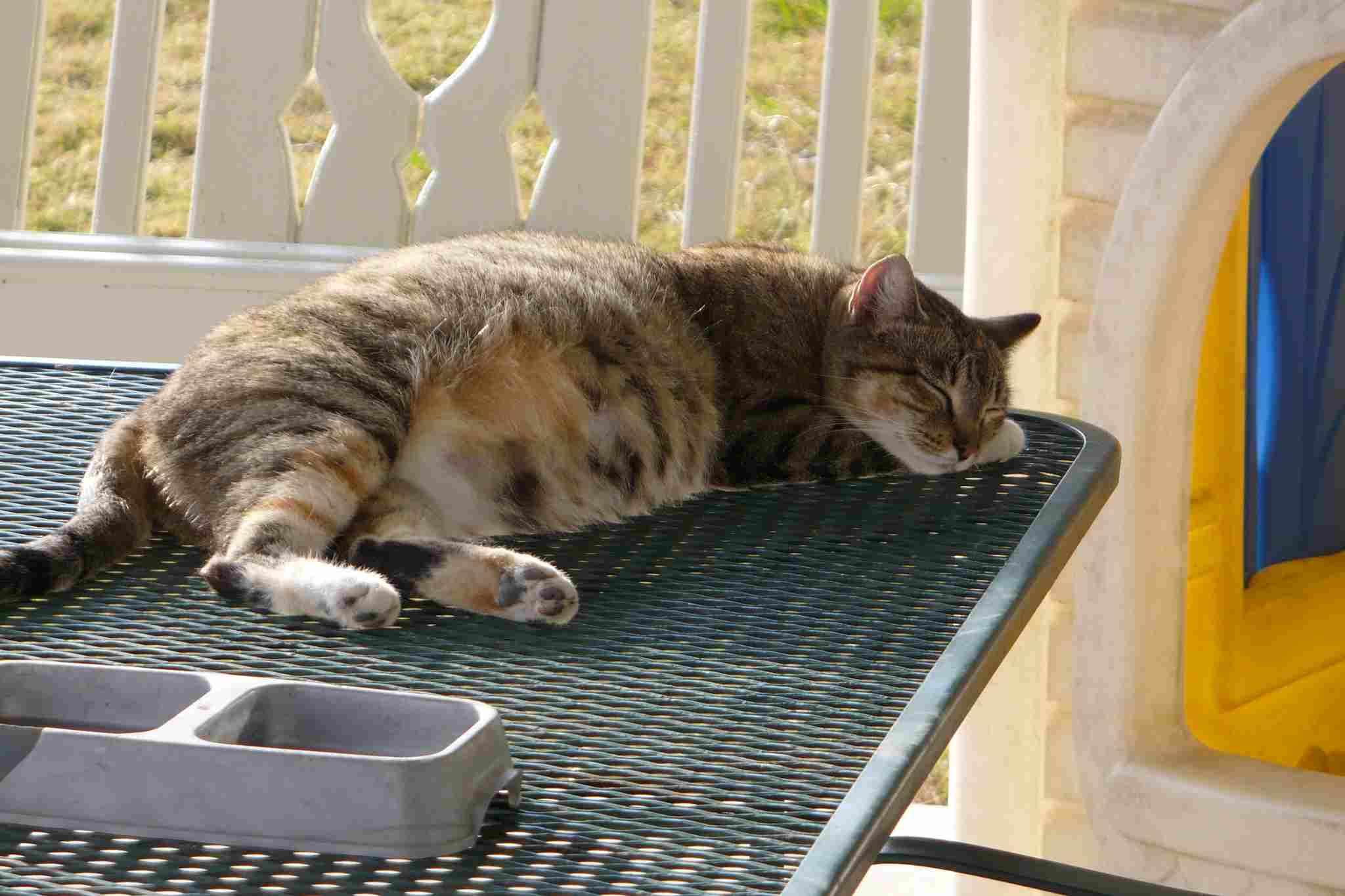
Pregnant Cat:
Changes in Heat Cycles: A pregnant cat will exhibit a lack of interest in mating once she becomes pregnant.
Behavioral Shifts: Some pregnant cats may display mood changes, becoming more affectionate or seeking solitude.
Increased Appetite: Early in pregnancy, some cats may show an increase in food consumption.
Vomiting: Morning sickness is possible in pregnant cats, leading to occasional vomiting.
Fat Cat:
Consistent Heat Cycles: A fat cat’s reproductive cycle remains unchanged.
Stable Behavior: A fat cat’s behavior typically remains constant, with no notable shifts.
Steady Appetite: Obesity may lead to a consistent or increased appetite, but without the sudden changes seen in pregnancy.
Absence of Morning Sickness: Unlike pregnant cats, fat cats do not experience morning sickness and do not exhibit vomiting as a symptom.
2. Belly Distention And Morphology:
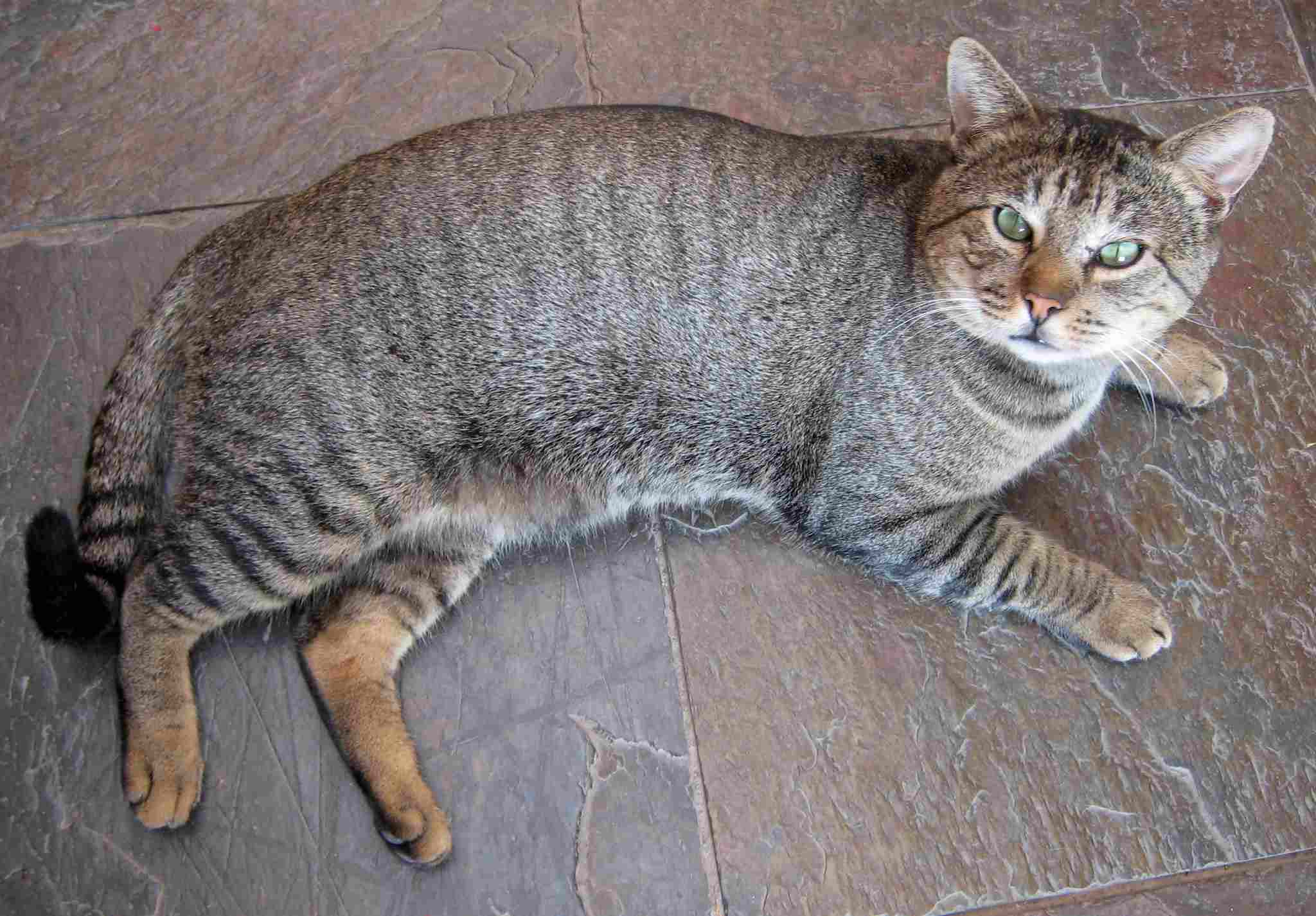
Pregnant Cat:
Details: The abdomen gradually swells as pregnancy progresses due to the growing kittens. By mid to late pregnancy, the belly becomes visibly rounded.
Comparison: The distention is proportional to the stage of pregnancy, and palpation may reveal the presence of developing fetuses.
Implications: A visibly rounded abdomen is a reliable sign of pregnancy, but accurate assessment may require veterinary examination.
Fat Cat:
Details: Obesity leads to a generalized enlargement of the abdomen, resulting in a more uniform, widespread distention.
Comparison: The distention is often symmetrical, lacking the specific changes associated with fetal development.
Implications: Belly distention in a fat cat is not indicative of pregnancy but signals excess body fat. Distinguishing between pregnancy and obesity may require a veterinarian’s expertise.
3. Abdominal Hardness/Softness:
Pregnant Cat:
Details: The abdomen becomes firmer as the pregnancy progresses due to the developing fetuses and the expansion of the uterine wall.
Comparison: Gradual and noticeable firmness, especially in the lower abdomen, is a characteristic feature.
Implications: Palpating the abdomen can provide insights into the stage of pregnancy, aiding in estimating the time until delivery.
Fat Cat:
Details: Abdominal softness is common in fat cats, as excess body fat tends to be evenly distributed.
Comparison: There is a consistent, soft feel throughout the abdomen, lacking the localized firmness associated with developing fetuses.
Implications: The absence of specific firm areas suggests obesity rather than pregnancy, reinforcing the need for a professional evaluation.
4. Nipple Changes:
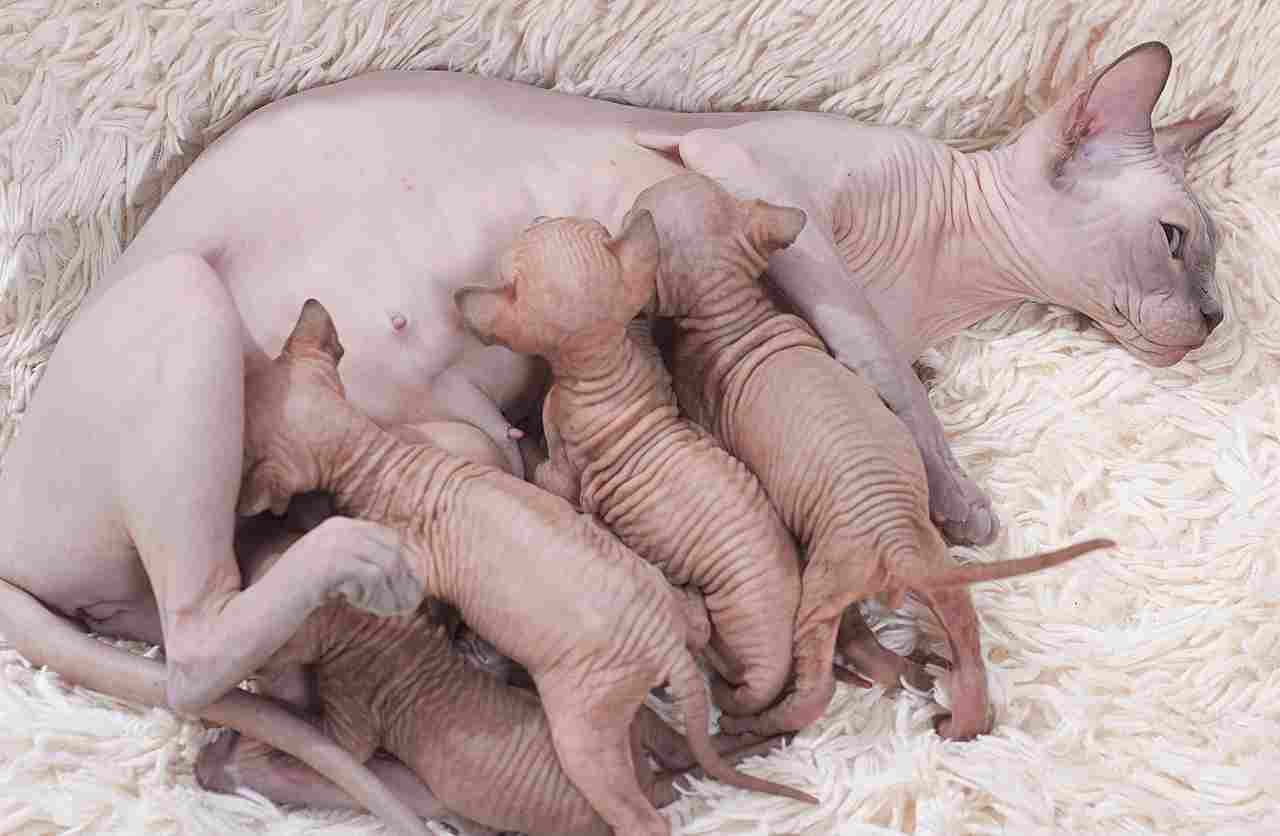
Pregnant Cat:
Details: Nipples undergo changes such as enlargement and darkening of the areolas, preparing for lactation.
Comparison: Progressive changes occur specifically in the nipple area, becoming more prominent as the pregnancy advances.
Implications: Nipple changes are a reliable indicator of pregnancy, with the degree of enlargement reflecting the stage of gestation.
Fat Cat:
Details: Nipples may appear unchanged or minimally affected in size and color due to obesity.
Comparison: The lack of significant alterations in the nipple area distinguishes it from the distinct changes observed in pregnancy.
Implications: Unaltered nipples, along with other factors, help differentiate between a fat cat and a pregnant one during visual inspection.
5. Rate of Weight Gain:
Pregnant Cat:
Details: Weight gain is gradual, influenced by the developing fetuses, increased blood volume, and mammary gland development.
Comparison: Weight gain is proportionate to the pregnancy stage, with a noticeable but controlled increase.
Implications: Monitoring weight gain helps estimate the overall health of the pregnancy and assess if it aligns with expected norms.
Fat Cat:
Details: Weight gain is often steady and generalized, resulting from excess calorie intake over an extended period.
Comparison: The weight gain is consistent across the body, lacking the specific increments associated with gestational changes.
Implications: Steady, uniform weight gain without clear signs of pregnancy supports the diagnosis of obesity rather than gestation.
6. Distribution of Body Fat:
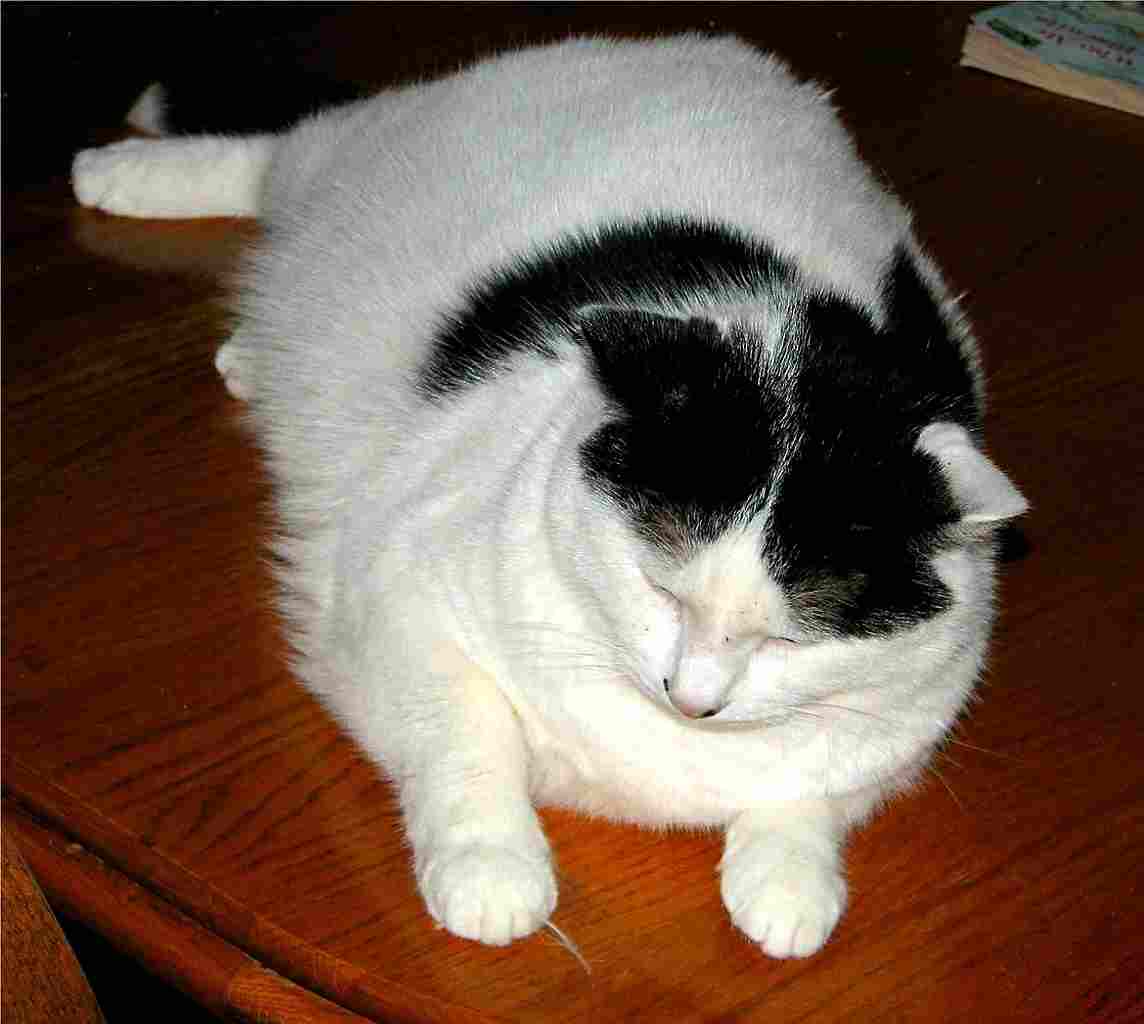
Pregnant Cat:
Details: Weight gain in a pregnant cat is concentrated in the abdominal region due to fetal development and increased uterine size.
Comparison: Body fat is distributed primarily around the abdomen, giving a more localized appearance.
Implications: The distinctive concentration of weight in the abdominal area is a key feature suggesting pregnancy.
Fat Cat:
Details: Excess body fat is evenly distributed throughout the body, including the neck, limbs, and tail.
Comparison: Body fat is spread uniformly, lacking the focal accumulation seen in pregnant cats.
Implications: The absence of localized weight gain reinforces the diagnosis of obesity over pregnancy.
7. Appearance From Above:
Pregnant Cat:
Details: The overall silhouette may appear slightly wider from above due to the expanding abdomen.
Comparison: The increased width is most prominent towards the rear half of the body.
Implications: Observing a broadened appearance from above is consistent with pregnancy, highlighting the expansion of the uterus.
Fat Cat:
Details: The width is uniformly increased across the body, without a noticeable bulge in the abdominal region.
Comparison: The broadened appearance is spread consistently without specific emphasis on the rear half.
Implications: A consistently wider profile without localized enlargement supports the diagnosis of obesity.
8. Behavioral Pattern:
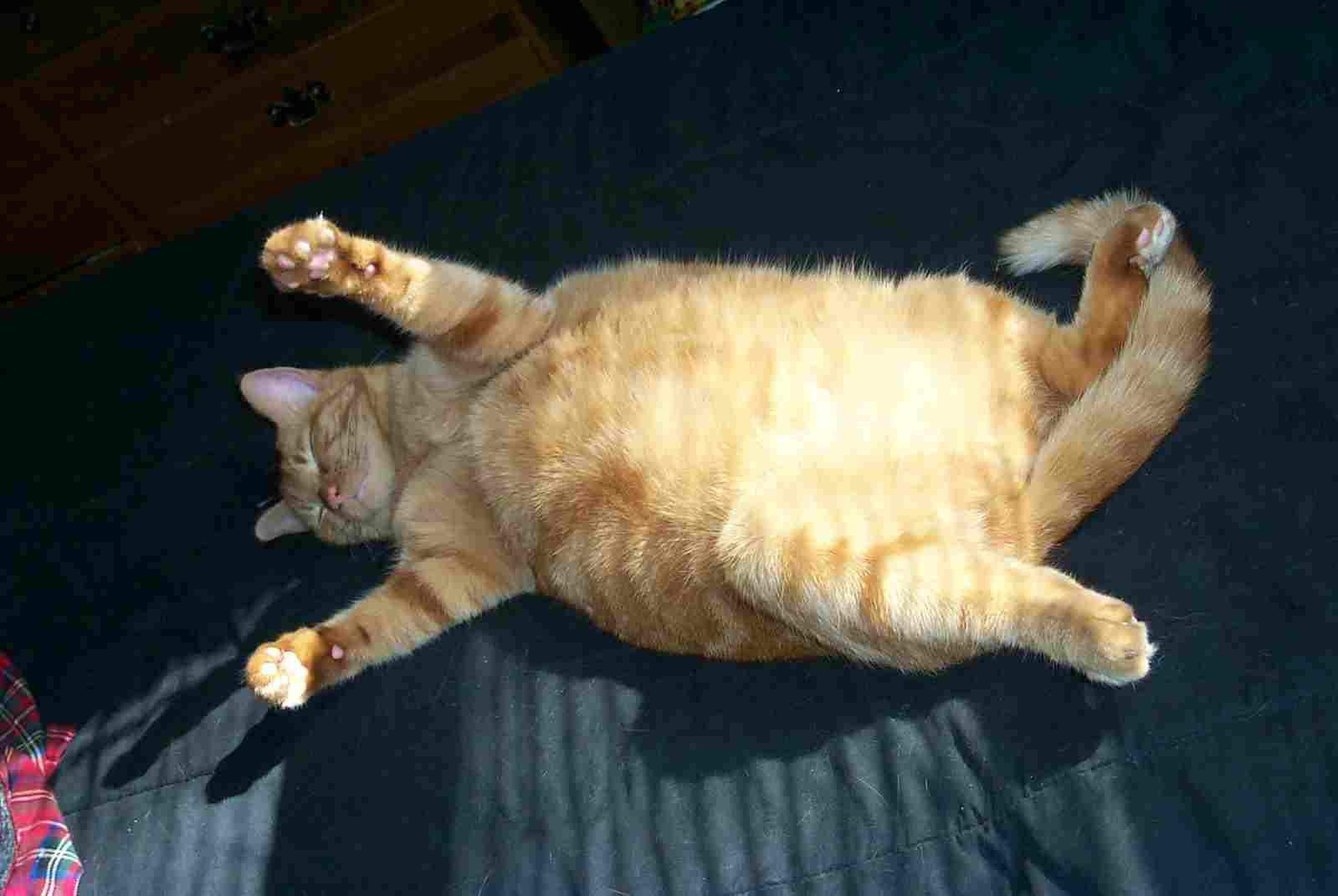
Pregnant Cat:
Details: Changes in behavior may include increased affection, nesting behavior, or seeking solitude.
Comparison: Behavioral changes are linked to the hormonal and physical adjustments associated with pregnancy.
Implications: Observing altered behavior provides additional clues for confirming pregnancy.
Fat Cat:
Details: Behavioral patterns remain relatively constant, with no notable shifts linked to reproductive changes.
Comparison: Lack of behavioral changes related to pregnancy distinguishes it from a cat experiencing gestation.
Implications: Stable behavior aligns with the diagnosis of obesity, supporting the overall assessment.
9. Agility:
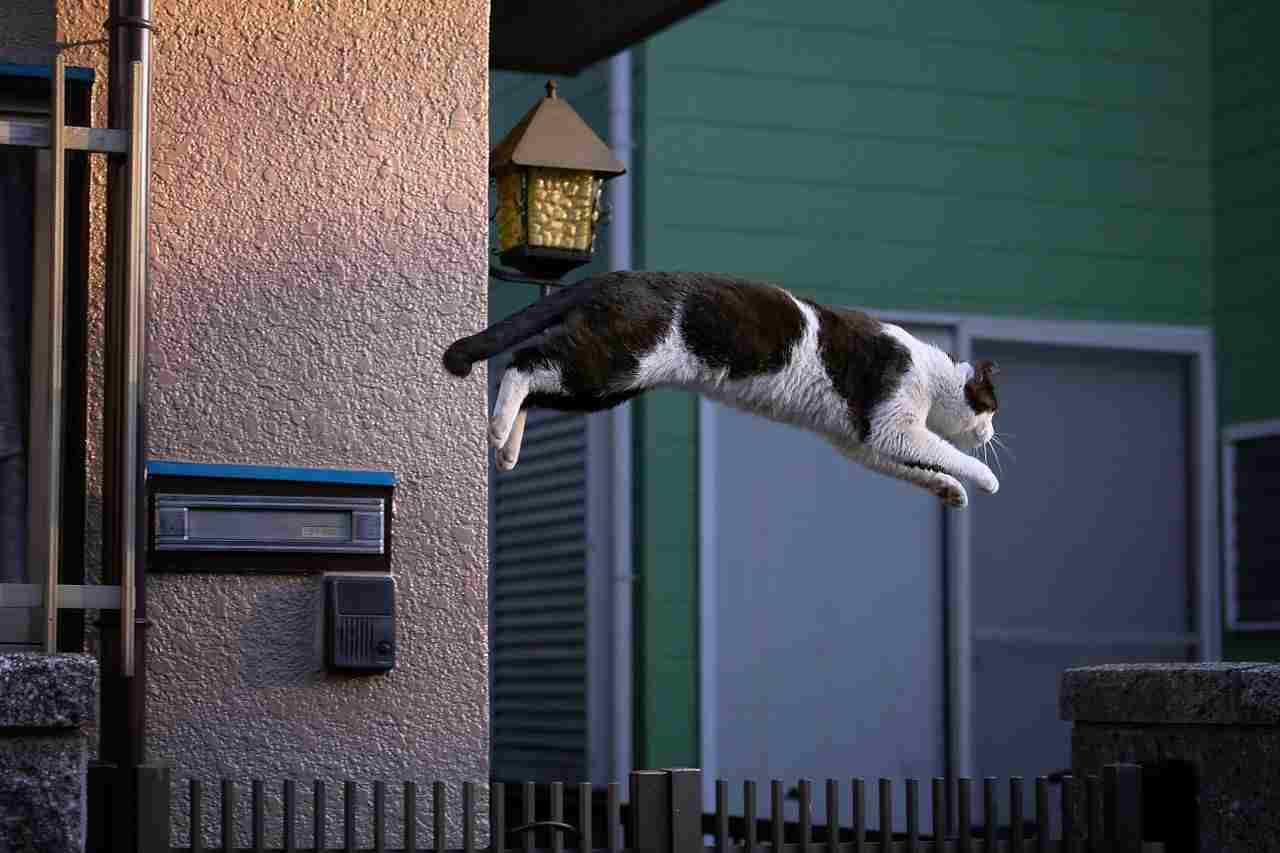
Pregnant Cat:
Details: As pregnancy progresses, a decline in agility may be observed due to the added weight and altered center of gravity.
Comparison: Changes in agility are more noticeable in the later stages of pregnancy.
Implications: Reduced agility can be a physical indicator of advancing pregnancy.
Fat Cat:
Details: Reduced agility may be observed in obese cats due to the additional body weight.
Comparison: The decline in agility is a result of excess body fat rather than gestational changes.
Implications: Distinguishing between the causes of reduced agility involves considering other physical signs, such as localized weight gain and behavioral patterns.
10. Sensitivity:
Pregnant Cat:
Details: Pregnant cats may become more sensitive to touch, especially around the abdominal region, due to increased hormonal changes.
Comparison: Sensitivity is often localized to the abdomen and may vary based on the stage of pregnancy.
Implications: Heightened sensitivity can be an additional clue to assess pregnancy, especially when combined with other physical and behavioral signs.
Fat Cat:
Details: Sensitivity to touch, if present, is not concentrated around the abdomen but may be more generalized.
Comparison: Lack of specific sensitivity in the abdominal area distinguishes it from the localized sensitivity seen in pregnant cats.
Implications: The absence of focused sensitivity is consistent with obesity rather than gestation.
11. Appetite:
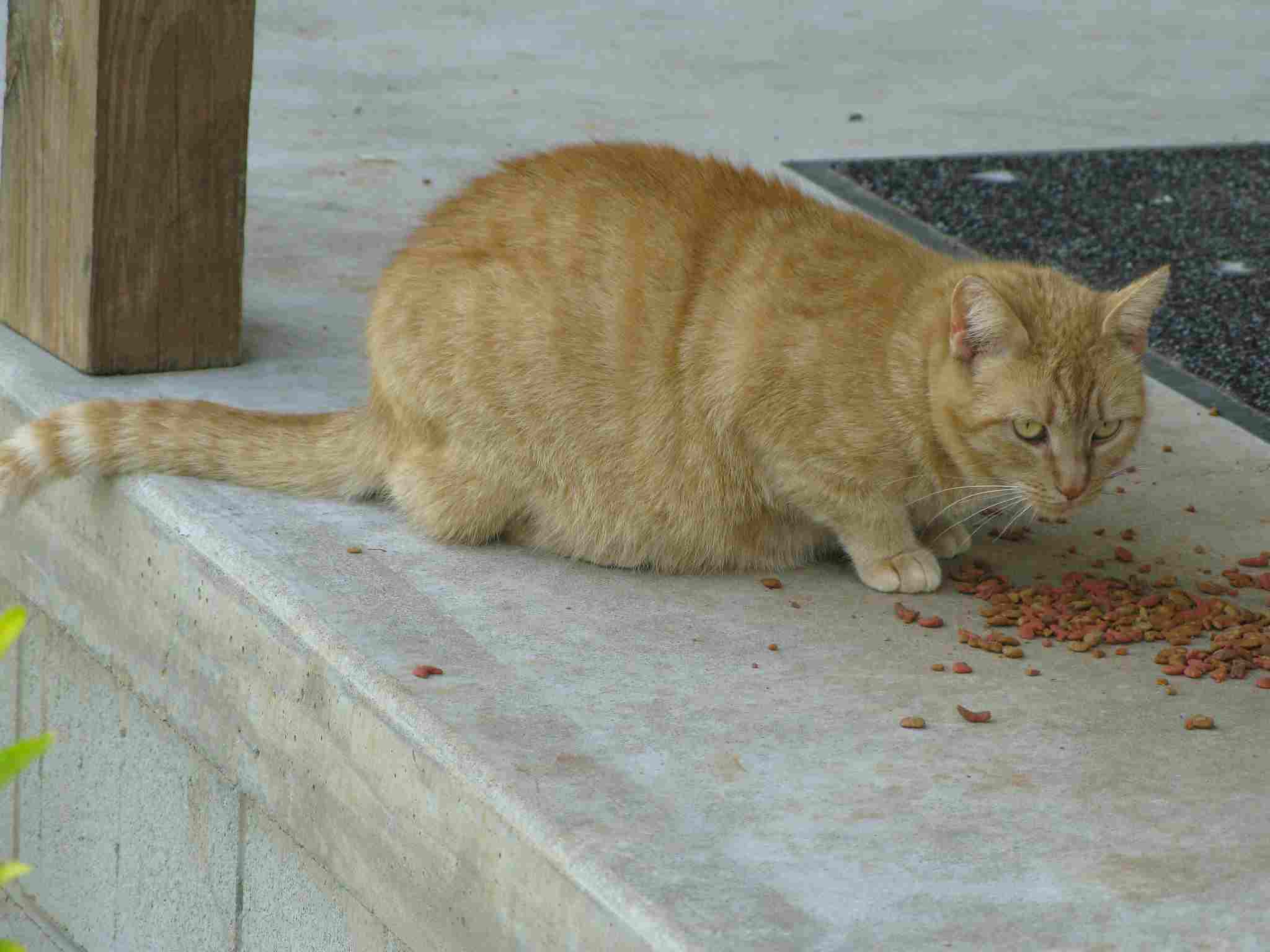
Pregnant Cat:
Details: Pregnant cats may show fluctuations in appetite, with some experiencing an initial increase, while others may have intermittent changes.
Comparison: Appetite changes are often linked to hormonal fluctuations associated with pregnancy.
Implications: Observing variations in appetite can be indicative of pregnancy, especially when combined with other signs.
Fat Cat:
Details: Appetite in obese cats tends to remain consistently high or may increase gradually over time.
Comparison: Lack of hormonal influences leads to stable or gradually increasing appetite.
Implications: A consistent or steadily increasing appetite without hormonal fluctuations supports the diagnosis of obesity.
12. Feeding Pattern/Preference:
Pregnant Cat:
Details: Pregnant cats may display specific preferences or changes in their feeding behavior, such as increased interest in certain foods.
Comparison: Changes in feeding patterns are often associated with hormonal shifts during pregnancy.
Implications: Observing alterations in feeding behavior can provide additional evidence of gestation.
Fat Cat:
Details: Feeding patterns in obese cats tend to remain relatively stable, with no specific preferences linked to reproductive changes.
Comparison: Lack of discernible changes in feeding behavior related to hormonal influences.
Implications: Stable feeding patterns support the diagnosis of obesity over pregnancy.
13. Behavior Toward Humans:
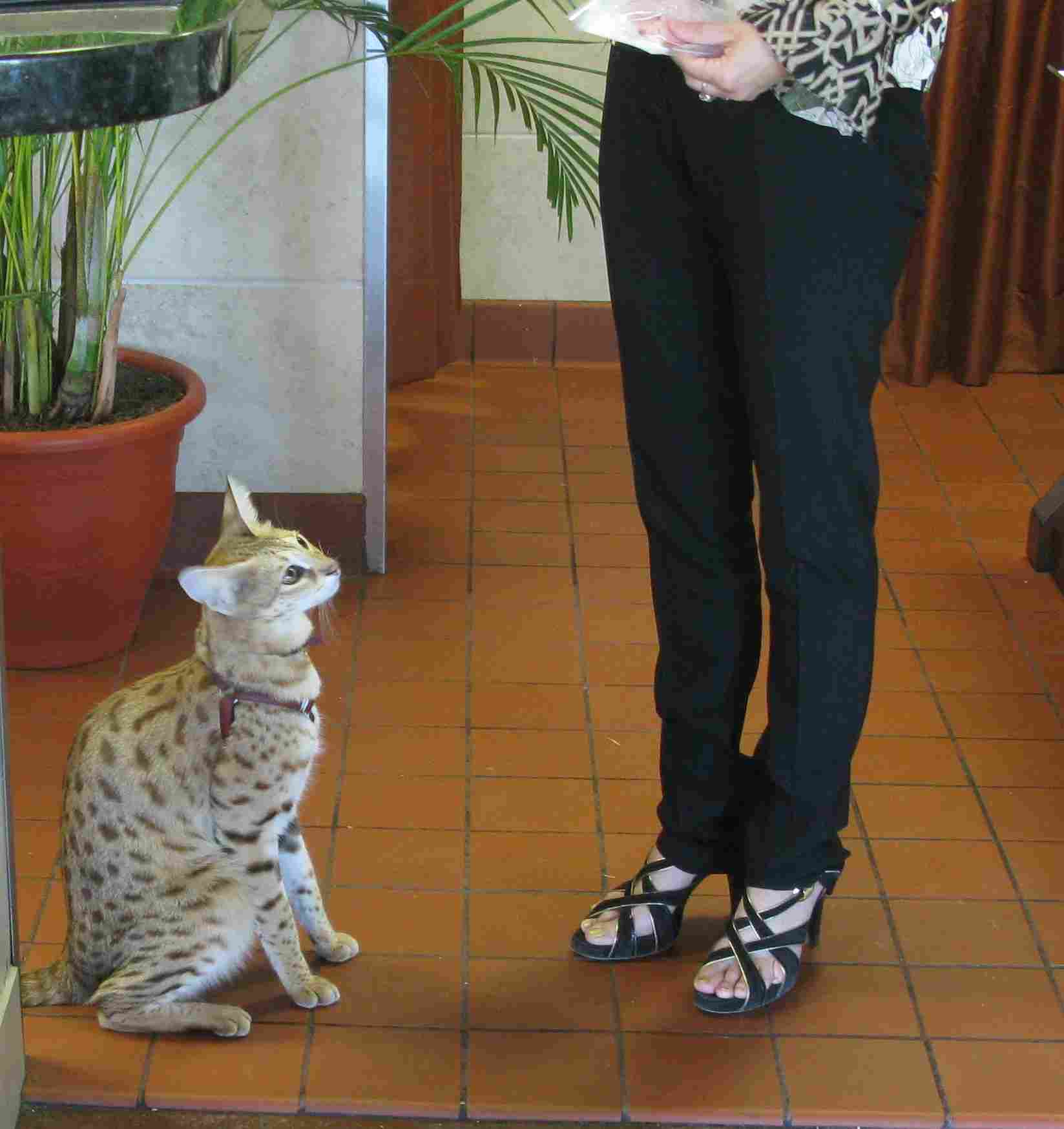
Pregnant Cat:
Details: Some pregnant cats become more affectionate or seek additional attention from their human companions.
Comparison: Increased sociability is often linked to hormonal changes during pregnancy.
Implications: Changes in behavior toward humans can be a supportive indicator of gestation.
Fat Cat:
Details: Behavior toward humans remains consistent, with no notable increase in affection or attention-seeking behaviors.
Comparison: Lack of behavioral changes linked to reproductive influences distinguishes it from a pregnant cat.
Implications: Stable behavior toward humans supports the diagnosis of obesity rather than gestation.
14. Health Concerns:
Pregnant Cat:
Details: Pregnancy is a natural physiological process, but potential health concerns include complications during delivery or issues with the health of the kittens.
Comparison: Health concerns primarily revolve around the well-being of the mother during pregnancy and the subsequent delivery.
Implications: Regular veterinary check-ups are crucial to monitor the health of the pregnant cat and address any emerging issues.
Fat Cat:
Details: Obesity poses various health risks, including diabetes, joint problems, and a higher risk of certain diseases.
Comparison: Health concerns are more focused on the long-term effects of obesity, such as its impact on overall well-being.
Implications: Obesity-related health issues require careful management, including weight control and a tailored diet, to mitigate potential complications.
15. Vomiting:
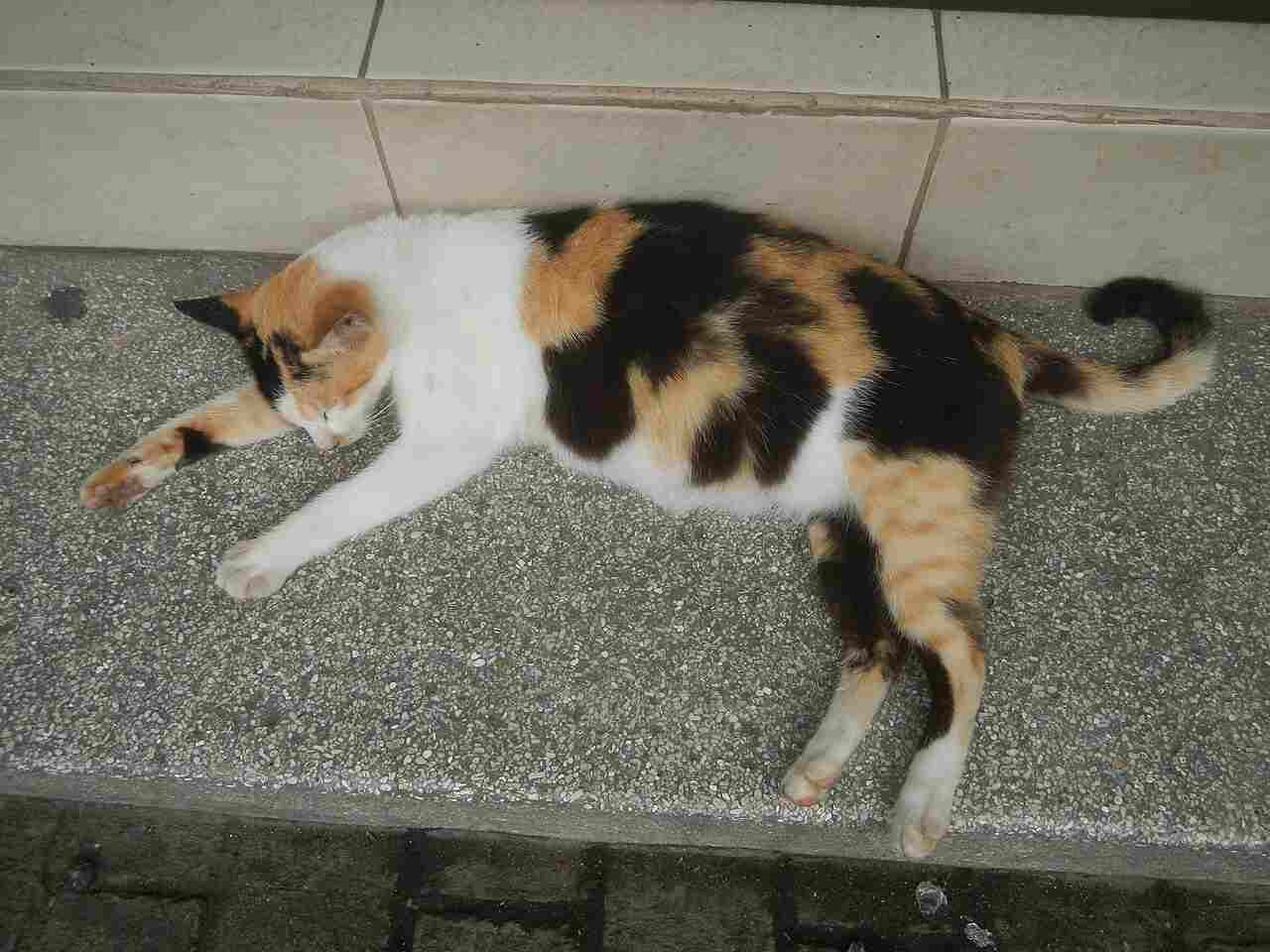
Pregnant Cat:
Details: Some pregnant cats may experience vomiting, particularly in the early stages due to hormonal changes.
Comparison: Vomiting is often sporadic and linked to morning sickness during pregnancy.
Implications: Occasional vomiting is considered normal in pregnant cats but should be monitored for excessive frequency or severity.
Fat Cat:
Details: Vomiting in obese cats is typically not associated with hormonal changes but may be linked to dietary issues or other health concerns.
Comparison: Vomiting episodes are not related to gestation and may require investigation for alternative causes.
Implications: Frequent or persistent vomiting in a fat cat may indicate underlying health problems unrelated to pregnancy.
16. Grooming And Maintenance Requirements:
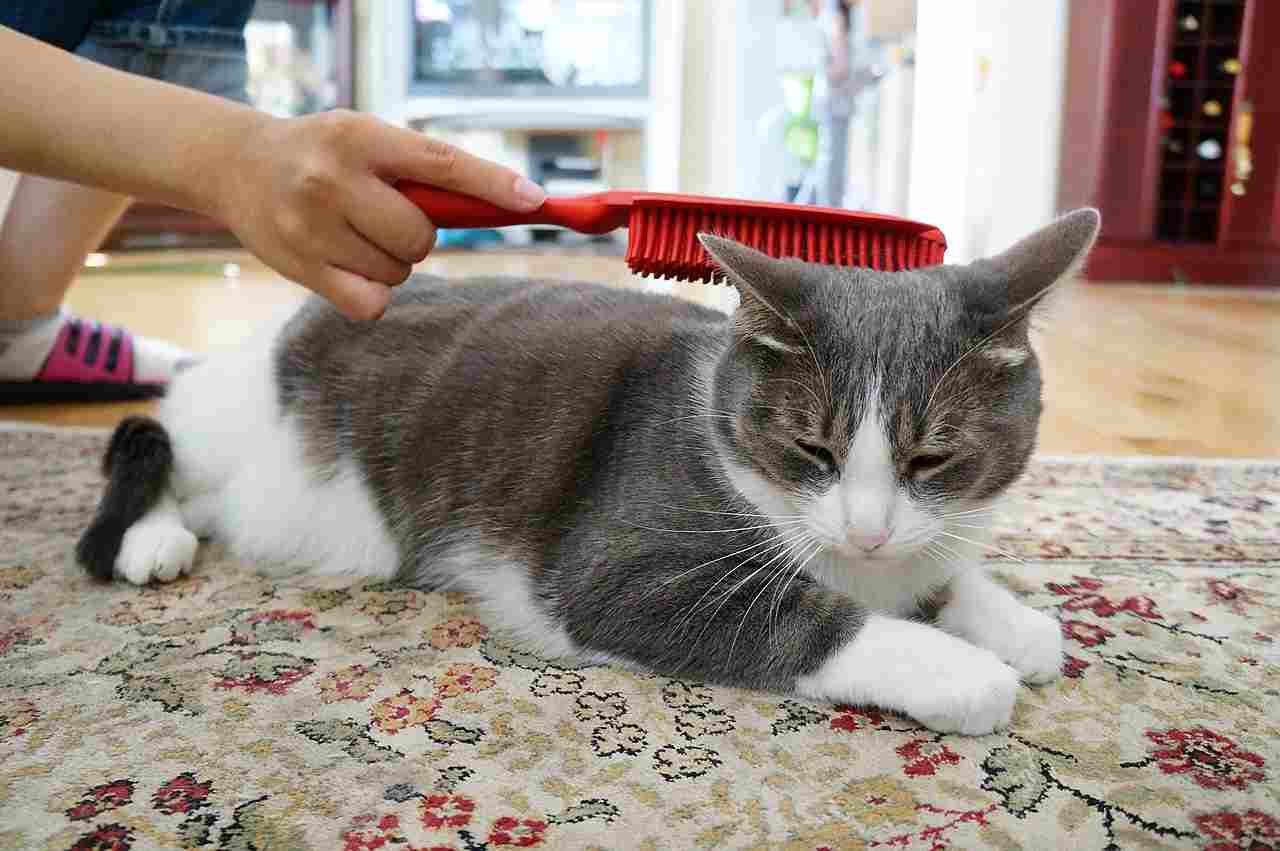
Pregnant Cat:
Details: Pregnant cats may experience changes in grooming behavior, either increasing or decreasing grooming activities.
Comparison: Changes in grooming are often influenced by hormonal fluctuations during pregnancy.
Implications: Monitoring grooming habits provides insights into the cat’s well-being and can serve as an additional indicator of pregnancy.
Fat Cat:
Details: Obese cats may face challenges in reaching and grooming certain areas due to their size and limited flexibility.
Comparison: Changes in grooming habits are more likely due to physical limitations rather than hormonal influences.
Implications: Obesity-related grooming challenges highlight the importance of regular grooming assistance and weight management.
17. Recommended Measures:
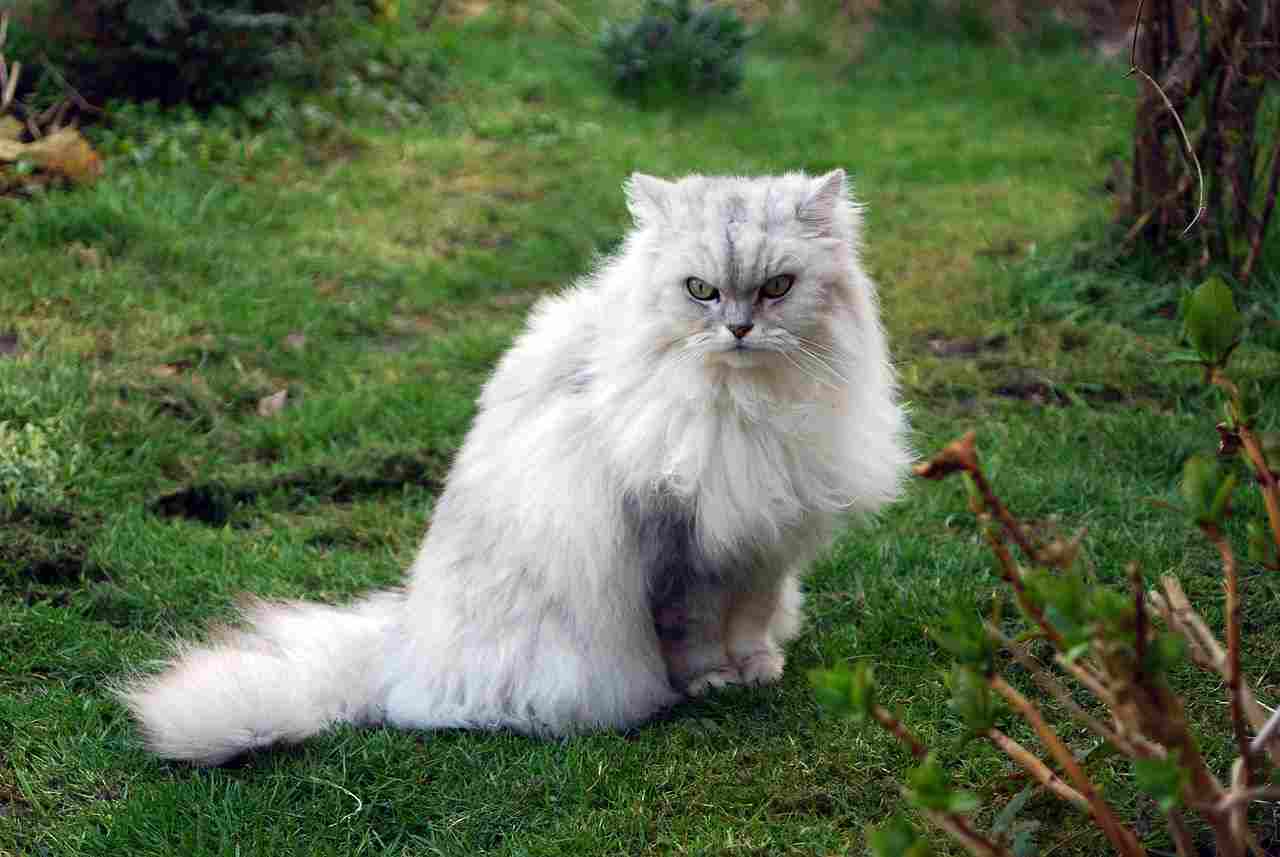
Pregnant Cat:
Details: Provide a balanced, high-quality diet suitable for the cat’s stage of pregnancy.
Comparison: Nutritional requirements change during pregnancy to support the health of both the mother and developing kittens.
Implications: Regular veterinary check-ups, monitoring weight gain, and adjusting the diet based on gestational stage are essential measures.
Fat Cat:
Details: Implement a controlled diet and exercise routine to achieve gradual weight loss.
Comparison: Weight management focuses on reducing overall body fat and maintaining a healthy weight.
Implications: Consultation with a veterinarian is crucial to develop a tailored weight loss plan, considering the cat’s age, health status, and dietary needs.
Pregnant Cat vs. Fat Cat: Comparison Summary
Similarities:
Both may experience changes in appetite, grooming habits, and behavior toward humans.
Regular veterinary care is crucial for monitoring health and addressing emerging issues.
Differences:
Symptoms At Outset:
Pregnant cat: Changes in heat cycles, behavioral shifts, increased appetite, occasional vomiting.
Fat cat: Consistent heat cycles, stable behavior, steady appetite, absence of morning sickness.
Belly Distention And Morphology:
Pregnant cat: Gradual swelling concentrated in the abdomen, noticeable rounding.
Fat cat: Uniform distention throughout the body, lack of specific changes in the abdomen.
Abdominal Hardness/Softness:
Pregnant cat: Gradual firmness, localized to the lower abdomen.
Fat cat: Consistent softness, lack of localized firm areas.
Nipple Changes:
Pregnant cat: Enlargement, darkening of areolas, preparing for lactation.
Fat cat: Unchanged or minimally affected nipples.
Rate of Weight Gain:
Pregnant cat: Gradual, proportionate to pregnancy stage.
Fat cat: Steady, generalized weight gain.
Distribution of Body Fat:
Pregnant cat: Concentrated in the abdominal region.
Fat cat: Evenly distributed throughout the body.
Appearance From Above:
Pregnant cat: Slightly wider profile, emphasized toward the rear.
Fat cat: Consistently wider profile without specific bulging in the abdomen.
Behavioral Pattern:
Pregnant cat: Changes in behavior linked to hormonal and physical adjustments.
Fat cat: Stable behavior without shifts related to reproductive changes.
Agility:
Pregnant cat: Decline in agility due to added weight.
Fat cat: Reduced agility due to excess body weight.
Sensitivity:
Pregnant cat: Increased sensitivity, especially in the abdominal region.
Fat cat: Generalized or no specific sensitivity around the abdomen.
Appetite:
Pregnant cat: Fluctuations in appetite, linked to hormonal changes.
Fat cat: Stable or gradually increasing appetite without hormonal influences.
Feeding Pattern/Preference:
Pregnant cat: Specific preferences or changes in feeding behavior.
Fat cat: Stable feeding patterns without specific preferences.
Behavior Toward Humans:
Pregnant cat: Increased affection or attention-seeking behaviors.
Fat cat: Stable behavior toward humans without notable increases.
Health Concerns:
Pregnant cat: Concerns related to the well-being of the mother during pregnancy and delivery.
Fat cat: Risks of diseases associated with obesity, such as diabetes and joint problems.
Vomiting:
Pregnant cat: Occasional vomiting linked to morning sickness.
Fat cat: Vomiting episodes not associated with hormonal changes in pregnancy.
Grooming And Maintenance Requirements:
Pregnant cat: Changes in grooming behavior influenced by hormonal fluctuations.
Fat cat: Challenges in grooming due to physical limitations.
Recommended Measures:
Pregnant cat: Balanced, high-quality diet tailored for pregnancy stages.
Fat cat: Controlled diet and exercise for gradual weight loss, considering overall health.
Conclusion
I. Similarities:
Both pregnant and fat cats may exhibit changes in appetite, grooming habits, and behavior toward humans.
Regular veterinary care is essential for monitoring health and addressing any emerging issues.
II. Differences:
Specific signs such as localized weight gain, nipple changes, and abdominal hardness are indicative of pregnancy.
Obesity is characterized by generalized weight gain, evenly distributed body fat, and a lack of distinct gestational signs.
